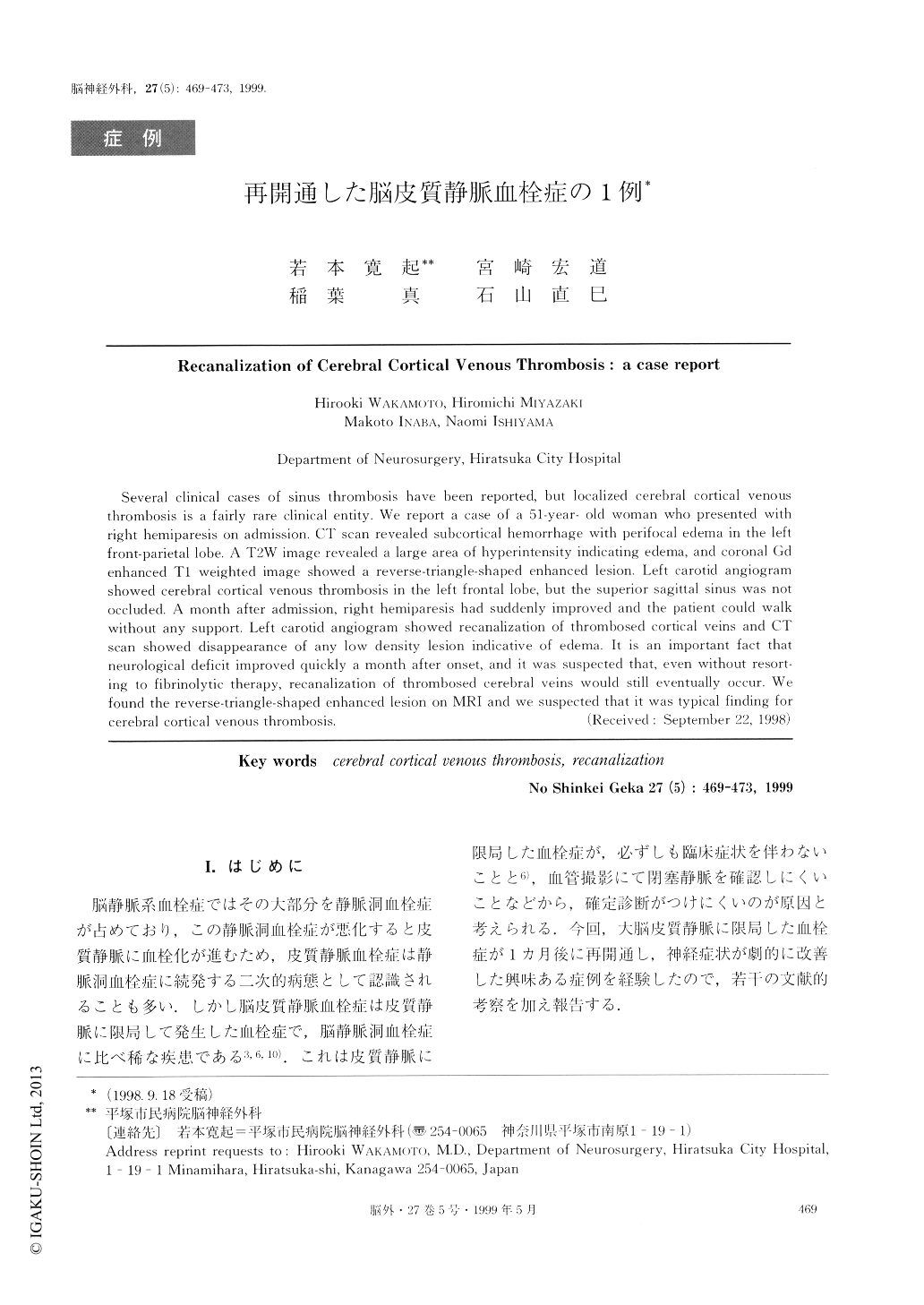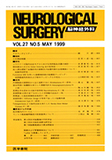Japanese
English
- 有料閲覧
- Abstract 文献概要
- 1ページ目 Look Inside
I.はじめに
脳静脈系血栓症ではその大部分を静脈洞血栓症が占めており,この静脈洞血栓症が悪化すると皮質静脈に血栓化が進むため,皮質静脈血栓症は静脈洞血栓症に続発する二次的病態として認識されることも多い.しかし脳皮質静脈血栓症は皮質静脈に限局して発生した血栓症で,脳静脈洞血栓症に比べ稀な疾患である3,6,10).これは皮質静脈に限局した血栓症が,必ずしも臨床症状を伴わないことと6),血管撮影にて閉塞静脈を確認しにくいことなどから,確定診断がつけにくいのが原因と考えられる.今回,大脳皮質静脈に限局した血栓症が1カ月後に再開通し,神経症状が劇的に改善した興味ある症例を経験したので,若干の文献的考察を加え報告する.
Several clinical cases of sinus thrombosis have been reported, but localized cerebral cortical venousthrombosis is a fairly rare clinical entity. We report a case of a 51-year- old woman who presented withright hemiparesis on admission. CT scan revealed subcortical hemorrhage with perifocal edema in the leftfront-parietal lobe. A T2W image revealed a large area of hyperintensity indicating edema, and coronal Gdenhanced T1 weighted image showed a reverse-triangle-shaped enhanced lesion. Left carotid angiogramshowed cerebral cortical venous thrombosis in the left frontal lobe, but the superior sagittal sinus was notoccluded. A month after admission, right hemiparesis had suddenly improved and the patient could walkwithout any support. Left carotid angiogram showed recanalization of thrombosed cortical veins and CTscan showed disappearance of any low density lesion indicative of edema. It is an important fact thatneurological deficit improved quickly a month after onset, and it was suspected that, even without resort-ing to fibrinolytic therapy, recanalization of thrombosed cerebral veins would still eventually occur. Wefound the reverse-triangle-shaped enhanced lesion on MRI and we suspected that it was typical finding forcerebral cortical venous thrombosis.

Copyright © 1999, Igaku-Shoin Ltd. All rights reserved.


